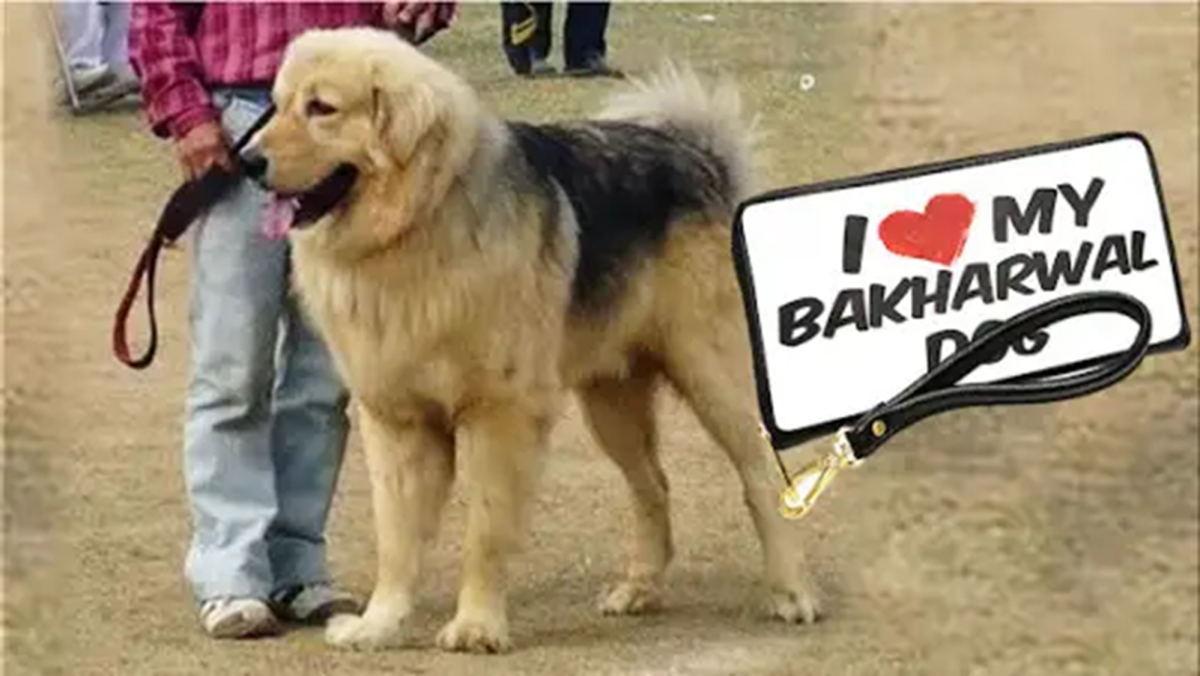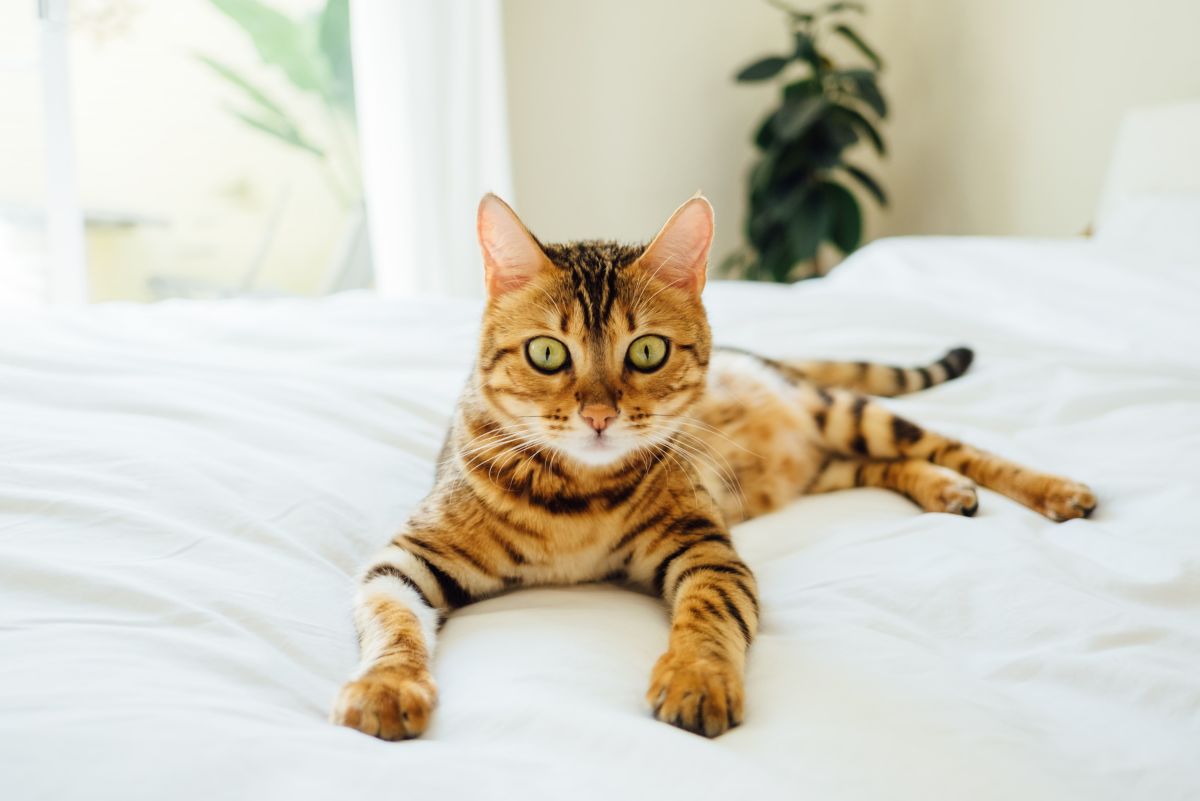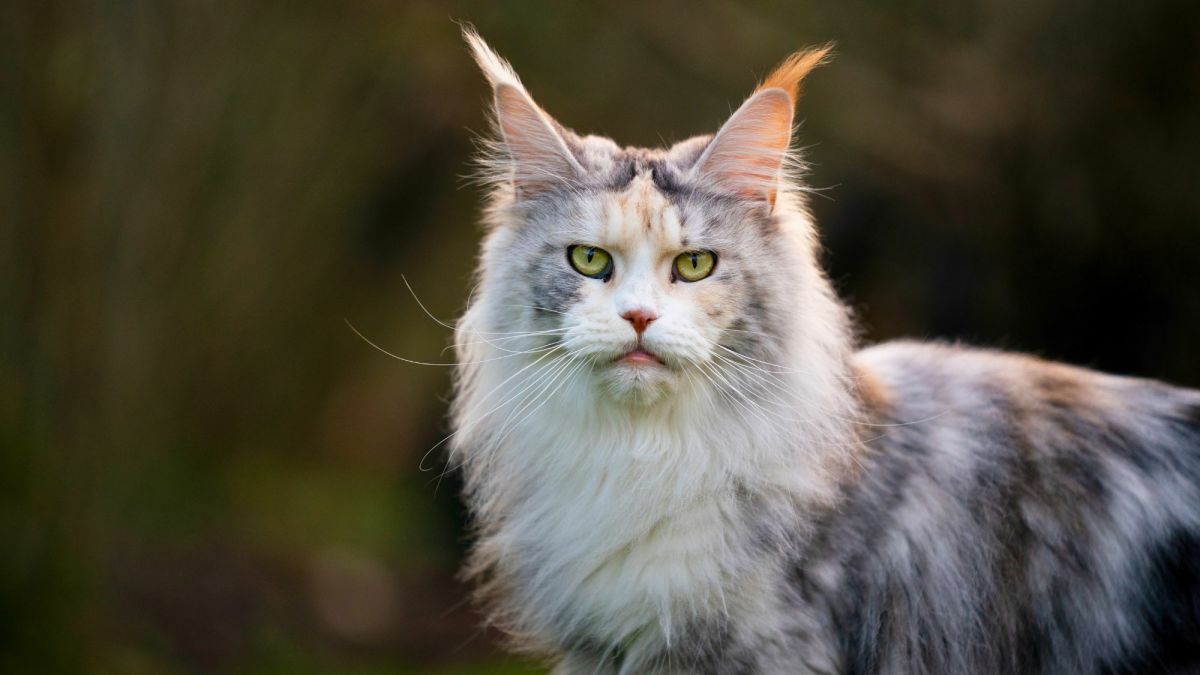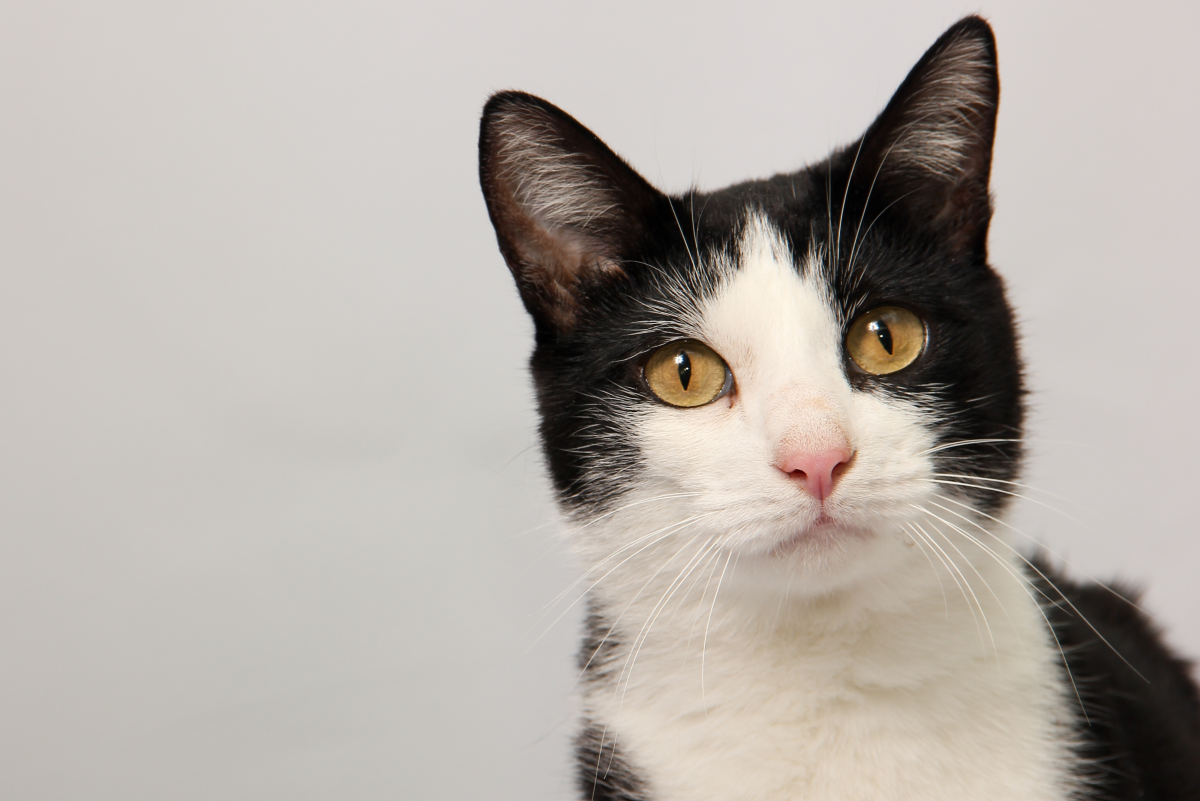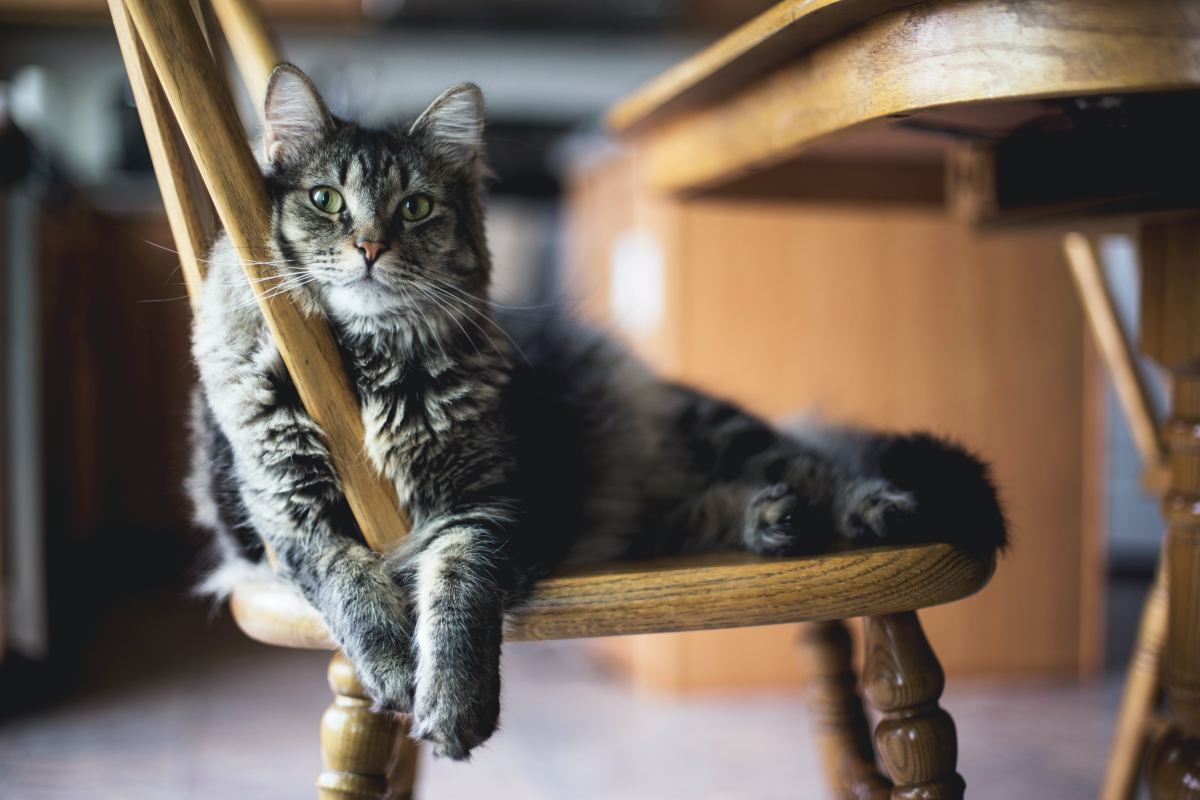The Aegean Cats of Greece: A National Treasure
In August of 2012, I was fortunate enough to take a two-week holiday to the island of Crete, Greece. During the course of my stay, I was taken aback by the sheer number of feral cats on the island. They were everywhere - tavernas, formal restaurants, streets, driveways, doorsteps, beaches, tourist areas, fishing ports, and virtually any other establishment or crevice imaginable. And, unlike your typical housecat, whose temperament ranges from terrified to skittish to moderately friendly, these cats were unabashedly affectionate. I later learned that the majority of these cats are not your garden variety domestic felines, but an entirely pure, separate breed known as the Aegean cat. What is the Aegean cat and why is it so unique?
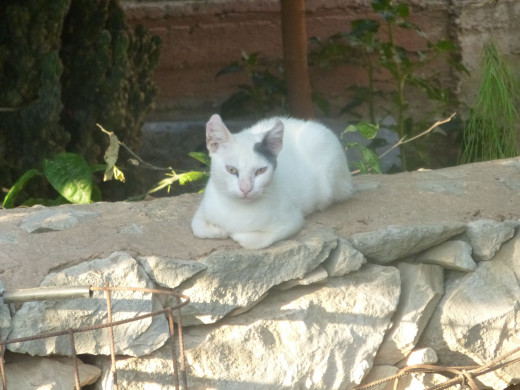
Map of The Cyclades and Surrounding Areas
The Origins of the Aegean Cat
Aegean cats emanated from a cluster of Greek islands known as the Cyclades. Nestled above the larger island of Crete and sandwiched between mainland Greece and Turkey, the Cycladic islands have historically acted as a hub for the thriving shipping network in the region. Given the mobility of the area, the cats eventually made their way to the surrounding Greek islands, where they have since multiplied exponentially, their characteristics remaining evolutionally preserved.
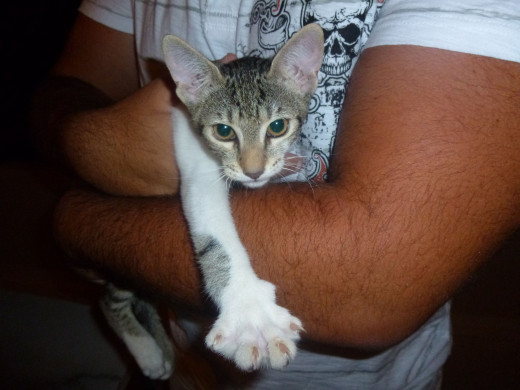
The Aegean's Physical Appearance
To the untrained eye, the breed might resemble an ordinary domestic shorthair. However, a closer inspection reveals several defining characteristics that render these adorable creatures striking standouts. The Aegean cat’s most defining attribute is its almond eyes, which usually shine beautiful shades of green. The shape of the eye ranges from slightly upturned to exotic and slit-like.
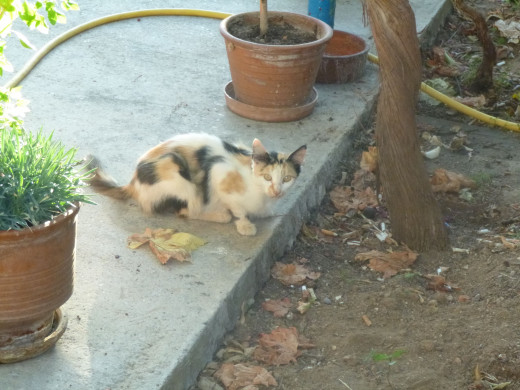
The Aegean cat has an appealing physique. It is of medium stature, with a long trunk and legs. The body is complemented by an extended tail, which is elegant in its movements. The Aegean’s coat is semi-long. It is typically bi-colored or tri-colored, with white fur covering between 1/3 to 2/3 of the coat. They have round paws and wide-set, perky, erect ears. The chin and jawline are small and ballerina-like. The breed is known to be quite healthy, which health is attributed to the native cats' uninterrupted evolution over time.
The Temperament of the Breed
All aesthetics aside, the Aegean cat’s temperament is what makes it a true gem of a companion. The Aegean is akin to a small child – innocent, befriending, and freely trusting. It lacks any inhibition. This innate and genuine disposition is particularly endearing, often winning it table scraps of fish and chicken, vigorous tummy rubs, and dedicated attention from tourists and locals alike. Given its balanced and receptive demeanor, the Aegean harmonizes well with small children and is a good choice for a household pet.
The Aegean’s desire for human affection and entertainment is unprecedented. Extraordinarily playful, the Aegean is at times histrionic in its desperate attempts for attention. Like a street performer with his hat laid in front of him or a magician waiting for applause, the Aegean accomplishes its ends without annoying and demanding displays, but with amazing and intelligently orchestrated schemes. It would be extraordinarily difficult, even for someone who loathes cats, to be immune to the Aegean’s seductive charm.
The essence of the Aegean cat is difficult to truly comprehend without having had the pleasure of actually meeting one little such wonder. When I visited Crete, not only did I get the opportunity to see and meet many beautiful Aegeans, I was able to make acquaintance with one special Aegean who, typical to the breed’s nature, “found me”.
My travel companion, Christos, and I were staying at his family’s house in a residential area of Chania. Like many Cretan homes, the yard area was adorned with grapevines, pomegranate trees, and other lush Mediterranean flowers and greens. Upon returning from a taverna one afternoon, we heard a deafening screech emanating from the the right of the yard. Curious, we followed the noise, scanning the yard for the animal, who sounded as if it were in distress. I wandered over to the far back of the yard. By this time, the animal had stopped crying. We feared the worst.
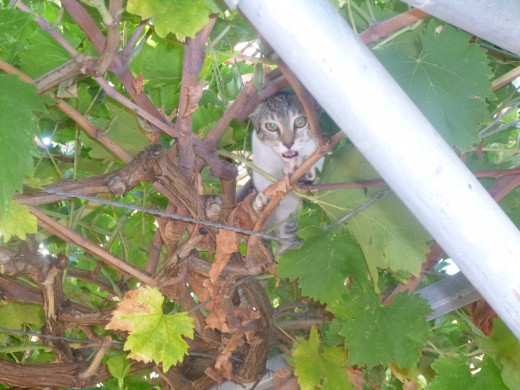
Defeated, I began walking back to the front of the home. I was traversing the walkway underneath the grapevine when a loud screech caused me to drop my handbag and nearly sent me running. I spent a split second regaining my composure before my eyes darted up towards the grapevine. A beautiful white and grey cat sat two feet above me, its claws ensnared on the metal grapevines. As soon as the cat definitively knew that it had my attention, it began wailing and wailing as if it were stuck on the grapevine and had no way of getting back down to earth.
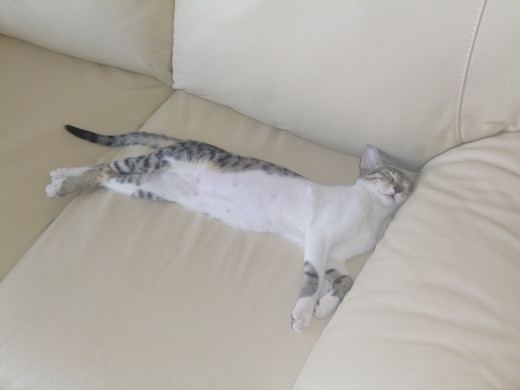
I called over to Christos, who, a native of the land, effortlessy peeled the small female cat from the tree. It appeared to be a toddler or tween in terms of cat years. Her front and back paws enveloped Christos’ muscular triceps as if she had been waiting for Christos to rescue her her entire life. Mesmerized by what appeared to be a needy, endangered and hungry stray cat, we took her into the house to treat her to some leftover chicken and fish from our afternoon meal. We gave her the moniker “Zeusa”, a purported female version of the Greek god Zeus, the god of thunder.
We reveled in Zeusa as would a set of parents with a newborn child, holding her up over our heads with glee and adorning her cheeks with kisses. We let her stay through the night. The next day, however, we were set to visit a nearby beach. Given that we had no litterbox, we decided to release her, on a full stomach, back into the yard. Believing we would never see her again, we said our goodbyes.
Sunset was approaching by the time we pulled the car up to the house. As soon as the car door closed, we heard the familiar cry of an animal towards the right side of the yard. Lo and behold, Zeusa was back up in the grapevine, pleading for help. Happy to see her again yet puzzled as to how she could so easily repeat her predicament, we again rescued her and brought her into the house for a meal and some respite from the heat.
What we believed to be an anomolous incident turned into a pattern that continued for the duration of our stay on Crete. Each day, after returning from our travels, we would find Zeusa perched up in the grapevine, ready to act out her role as “damsel in distress”, eager for leftover fish, warm hands along her trunk, and a soft couch to laze away on. At no point, however, did the obvious charade become irritating. Zeusa became our baby, a highlight of our holiday.
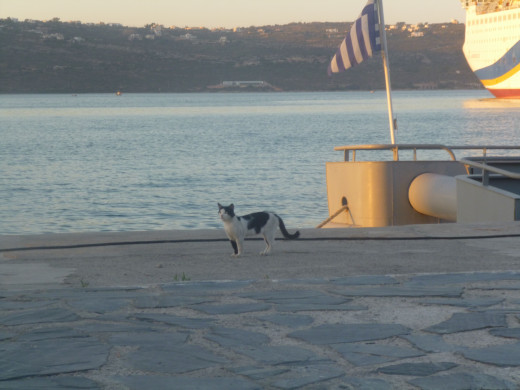
Zeusa’s mischievous spirit best exemplifies the precocious yet irresistible nature of the Aegean cat. While some argue that Greece’s alleged lack of efforts to control its feral population is inhumane, it was quite clear to me that the nationals treasure its cat population. Not once did I see an Aegean, or any cat for that matter, shooed away, spoken to harshly, or mistreated. Although feral, these cats do quite well hanging out at the local piers waiting for sea scraps or relying on the kindness of tourists and locals. The Aegean cats are a staple of the Mediterranean landscape, a treasured part of the country’s cultural history and modern life.
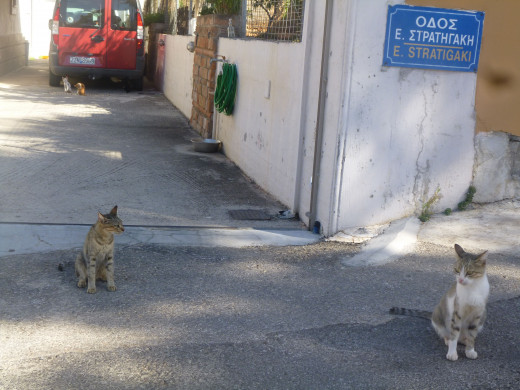
The Aegean cat is a little-known breed whose history dates back several thousand years. Despite its progeny, as well as its largely feral existence, this breed of cat is amazingly astute in getting its needs met, even if it means seducing you in the process. I eagerly await my next visit to the Greek islands, where I know I will be warmly greeted by the Aegean cats, in all their mysterious glory.
The Aegean Breed at a Glance
Physical
| Temperament
| Behavior
|
|---|---|---|
Slanted eyes, usually green
| Playful
| Travel in Groups
|
Rounded paws
| Mischevious
| Congregate near fishing piers
|
Has a fair amount of white fur
| Attention seeking
| Very vocal
|
Graceful chin
| Overwhelmingly friendly
| Keep vermin population down
|





